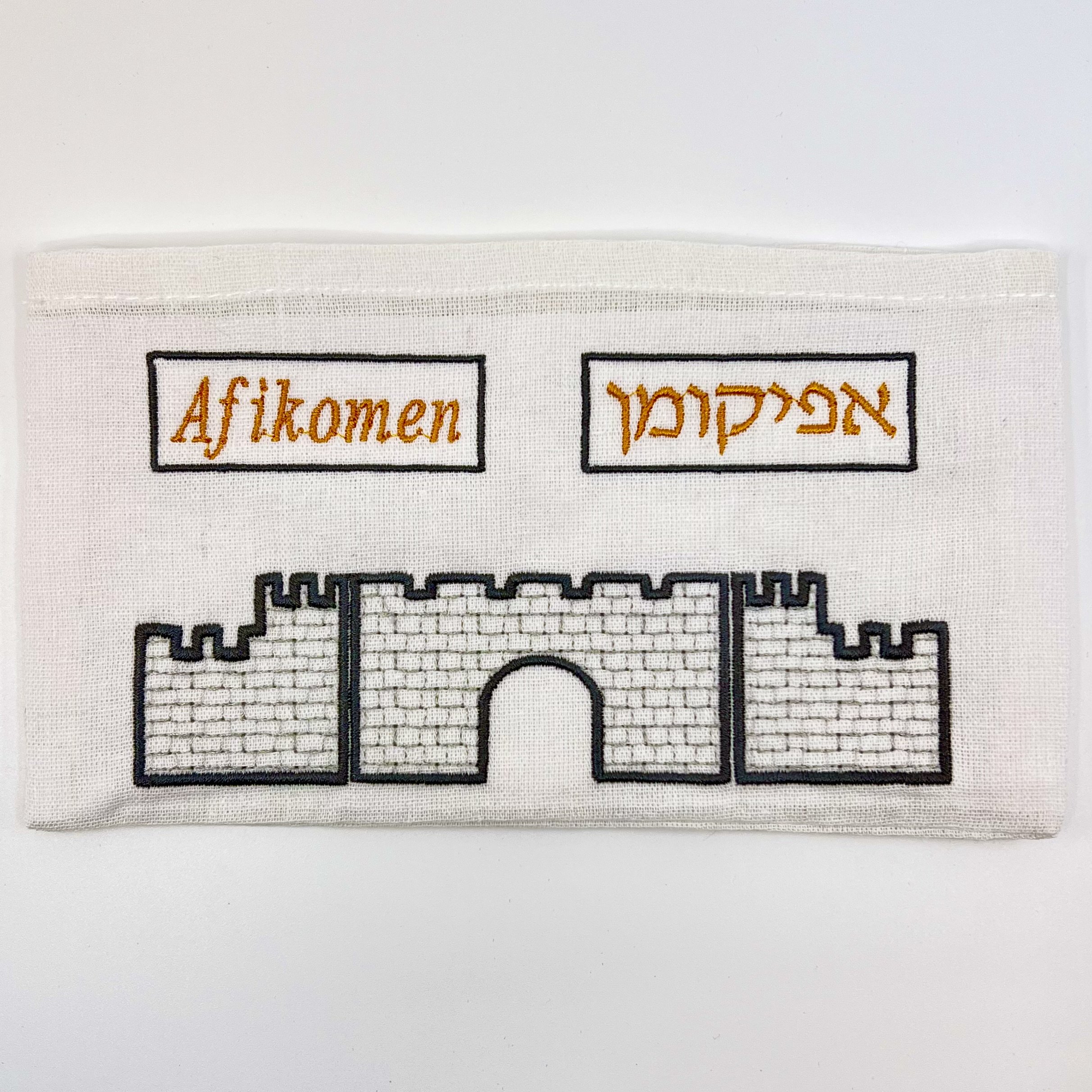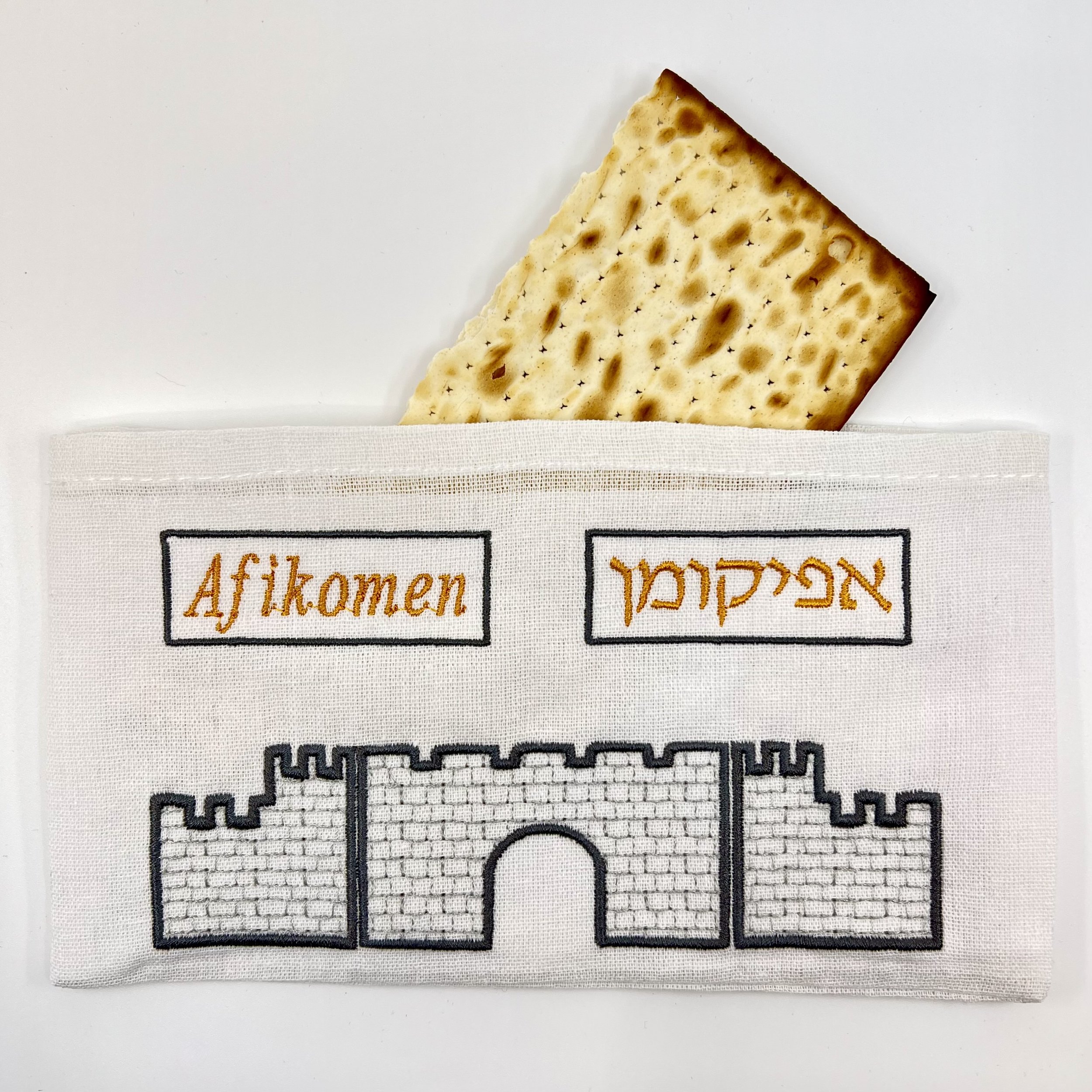Afikomen Bag
This beautiful and intricate design reminds us of Jerusalem with its ancient walls and gates. The custom of hiding the afikomen at the Passover seder was a rabbinic tradition to keep the children’s interest in the seder. The middle matzah is broken and half is hidden for the children to find later on. Dessert cannot be eaten until the afikomen is returned to the seder leader. This colorful bag can be used to put the afikomen is when it is hidden so matzah crumbs don’t get everywhere. “Afikomen” is on the cover in Hebrew and in English.
The overall size is 8 x 4.5 in (200 x 110 mm) and has one pocket.
This beautiful and intricate design reminds us of Jerusalem with its ancient walls and gates. The custom of hiding the afikomen at the Passover seder was a rabbinic tradition to keep the children’s interest in the seder. The middle matzah is broken and half is hidden for the children to find later on. Dessert cannot be eaten until the afikomen is returned to the seder leader. This colorful bag can be used to put the afikomen is when it is hidden so matzah crumbs don’t get everywhere. “Afikomen” is on the cover in Hebrew and in English.
The overall size is 8 x 4.5 in (200 x 110 mm) and has one pocket.
This beautiful and intricate design reminds us of Jerusalem with its ancient walls and gates. The custom of hiding the afikomen at the Passover seder was a rabbinic tradition to keep the children’s interest in the seder. The middle matzah is broken and half is hidden for the children to find later on. Dessert cannot be eaten until the afikomen is returned to the seder leader. This colorful bag can be used to put the afikomen is when it is hidden so matzah crumbs don’t get everywhere. “Afikomen” is on the cover in Hebrew and in English.
The overall size is 8 x 4.5 in (200 x 110 mm) and has one pocket.


